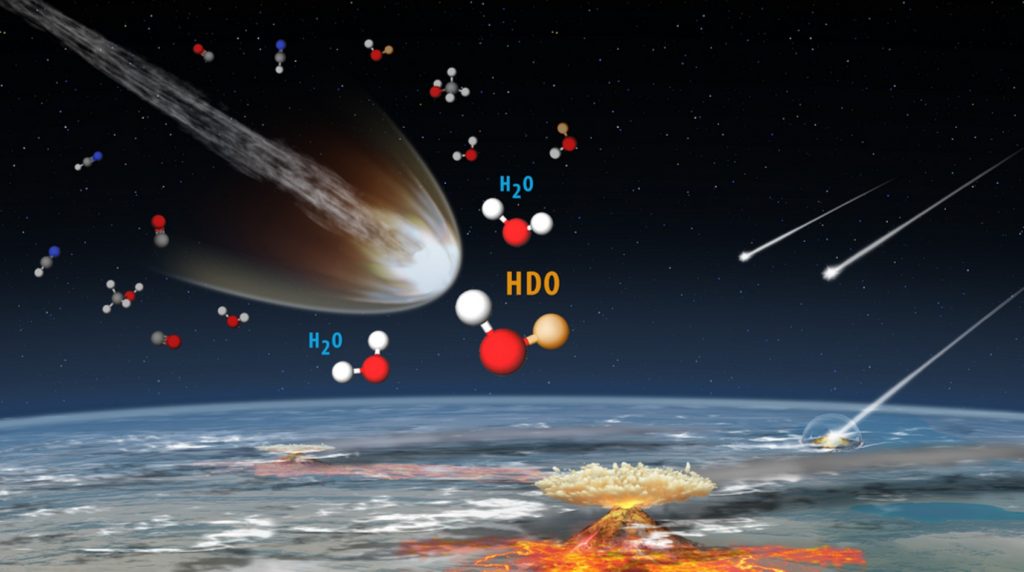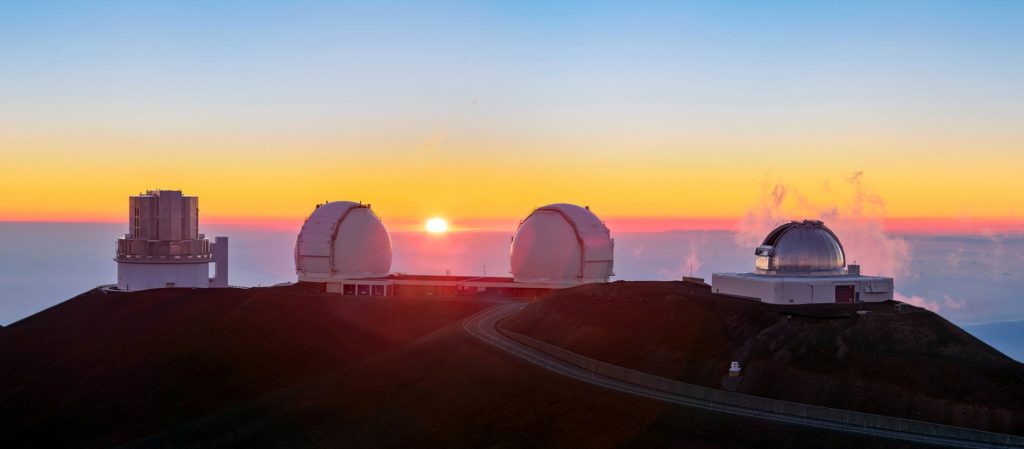NASA telescope atop Mauna Kea on Big Island helps unlock clues to life on Earth
New research uncovered compelling evidence — with the aid of a Big Island telescope atop Mauna Kea — that water from a comet is strikingly similar to that found in Earth’s oceans.
It offers a fresh spring of support for the idea that comets might have played a crucial role in delivering water — and possibly some of the molecular ingredients for life — to our planet.
An international team of scientists led by Martin Cordiner with NASA’s Goddard Space Flight Center used the powerful Atacama Large Millimeter/Submillimeter Array, or ALMA, an international astronomy facility operated by a partnership between European Southern Observatory, U.S. National Science Foundation and National Institutes of Natural Sciences of Japan in cooperation with the Republic of Chile.

They mapped the distribution of ordinary water — or H2O — and “heavy” water — or HDO, which contains the heavier isotope deuterium — in the cloud of gas surrounding the nucleus — called a coma — of Halley-type comet 12P/Pons-Brooks during its approach to the sun.
The ALMA observations were then combined with data on water and other gases, observed using NASA’s Infrared Telescope Facility atop Mauna Kea on Hawai‘i Island, to form a more complete picture of the comet.
Researchers were able to measure more accurately the ratio of deuterium to hydrogen, or D/H ratio, in the comet’s water by combining the complementary capabilities of the two telescopes.
The D/H ratio is a chemical fingerprint that helps scientists trace the origins and history of water throughout the solar system.
Remarkably, the D/H ratio of water in 12P/Pons-Brooks was found to be virtually indistinguishable from that of Earth’s oceans.
The measurement, (1.71±0.44) × 10−4, is the lowest such ratio ever measured in a Halley-type comet and at the lower end of values previously observed in other comets.
“Comets like this are frozen relics left over from the birth of our solar system 4.5 billion years ago,” Cordiner said in a release from the National Radio Astronomy Observatory, a facility of the U.S. National Science Foundation. “Since Earth is believed to have formed from materials lacking water, comet impacts have long been suggested as a source of Earth’s water.”
He added that the new results provide the strongest evidence yet that at least some Halley-type comets carried water with the same isotopic signature as that found on Earth, “supporting the idea that comets could have helped make our planet habitable.”
The research also confirms the origin of the observed gases, providing a more accurate picture of the comet’s true composition.
“By mapping both H2O and HDO in the comet’s coma, we can tell if these gases are coming from the frozen ices within the solid body of the nucleus, rather than forming from chemistry or other processes in the gas coma,” said study co-author NASA’s Stefanie Milam in the observatory’s release.
This marks the first time such detailed spatial mapping of these two forms of water has been achieved in a comet.

Halley-type comets are a class of comet with intermediate orbital periods — between 20 to 200 years — that visit the inner solar system only rarely.
The study’s findings are significant because previous measurements in other comets often showed water with a D/H ratio different from Earth’s, leaving the cometary origin of Earth’s water in doubt.
This new measurement suggests some comets — particularly those such as 12P/Pons-Brooks — could indeed have delivered water, and possibly other life-essential elements, to a young Earth.
The observations were only possible thanks to ALMA’s exceptional sensitivity and unique imaging capabilities, which allowed the team to detect the faint signature of heavy water emanating from the innermost regions of the coma — something that has never before been mapped in a comet.



